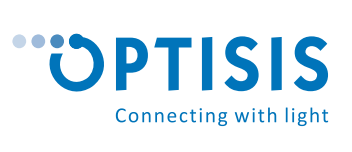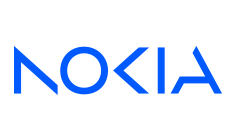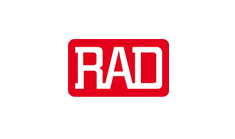Avoid unauthorised access to sensitive information
Determine the degree of robustness in internal systems in terms of protection against attackers who enter your network in any way, or against malicious/unaware internal users.
Discover the source of security threats
Use an internal security check to verify the likelihood of a person who is already inside the network gaining unauthorised access to critical and confidential company information.
A part of the methodology is the same as for external security verifications (accessible servers, services and applications are reviewed). A specific characteristic of these reviews is that the inspection is carried out from different points of the internal network. It also includes a more detailed overview of network settings, switches, internal filters/controls, topologies etc. The contractor is made aware of this in advance as the review is conducted in an “open” manner. Testing may also include a review of adequacy when it comes to the Wi-Fi network.
The testing results can be compared with similar test results, as the examination is performed using the CVSS matrix method, which ranks and scores vulnerabilities by a publicly recognised methodology.
What are the benefits?
A detailed written report revealing the flaws which might help an attacker enter your network or gain other unauthorised access to sensitive business information.
Frequently asked questions
Everything you need to know about performing an internal cybersecurity review.
What does an internal security review include?
An internal security review includes an overview of all servers, services and applications visible from individual network segments. At least part of the verification is performed several times from different points in the network. Namely, it makes sense to find out what is available from where.
An additional feature is an overview of the network topology and adequacy of internal filter settings as well as similar security mechanisms. The review provides information on:
- a complete inventory of servers, services and applications visible from specific network segments,
- the technical data contained within such services and applications that are visible to internal users,
- a summary of the security assessment and the results of the security deficiency malpractice test,
- an overview of the detected and confirmed security deficiencies, including a more detailed description, an indication of the potential consequences of the abuse, and recommendations/instructions for their removal.
What is not included in the internal security review?
The internal security review does not necessarily include all manual methods, which are more suitable for a detailed detection of deficiencies in various web applications or other specific applications. As a rule, the service is focused on those defects that can be detected using different tools. The manual part is intended to validate these defects, which means its purpose is not so much to discover any new/additional ones.
This kind of review also does not include the DOS and similar attacks that can cause malfunction of the information system.
What is the main purpose of an internal security review?
An internal security review is necessary and important mostly from two aspects:
- The internal users can always be a source of security threats. A dissatisfied user can quite easily acquire unauthorised access to important data and systems, as the internal security mechanisms are limited. It is important to know what an individual can be prone to misuse.
- External attackers can perform the attack through social engineering or perform other similar attacks to acquire access to users’ internal workstations. In the event of such attacks, it is really important to know what is visible from the internal workstation rather than to what degree can vulnerable services and applications be directly visible from the network (Internet).
How is an internal security review different from other similar services?
The difference between an internal security review and an external security review is that the former is performed from different points in the internal network. At the same time, it includes a review of the documentation, verification of the security system settings, etc.
Testing is based on the use of different tools, which is important in comparing results and minimising the falsely perceived deficiencies (i.e. false-positives), as well as minimising the possibility of overlooking a specific deficiency (i.e. false-negative).
Manual work is primarily used to check further for perceived vulnerabilities rather than to detect new ones.
Since the service is based on the use of tools, it is aimed at detecting vulnerabilities arising from the operating system versions and/or services, as well as settings that directly affect the service operation. As a rule, specific defects unique to the contracting authority are not verified through such reviews.
Can the perceived security defects be confirmed?
One should always strive to confirm the perceived safety deficiencies. The method of perceiving deficiencies is based on two principles:
- During the execution, an attempt is made to determine the version of the operating system or the service. Once this information is obtained, all possible deficiencies of the system can also be known. However, these deficiencies may be real or indirect, i.e. false-positives. The servers and services accessible from the Internet are generally well protected, which means that it is not always possible to determine the exact version of the software. Sometimes, this information is only partially identifiable or even false, which makes it likely that the identified defects are, in fact, false.
- Another principle of identifying deficiencies is by actually testing the responses of applications and services. However, these responses generally look for symptoms rather than directly checking for deficiencies.
Therefore, the detected defects should always be checked in order to perform a precise review of the actual ones. In doing so, the unnecessary alerts are avoided, which gives credibility to the report.
The actual possibility of misuse in specific defects is always checked manually, as it is often necessary to use a specific parameter in the malpractice test, or else the malpractice test must be carried out in different ways.
What is the result of an internal security review?
A detailed written report consisting of two parts, which are presented in the form of a workshop:
- Management report
It is a concise overview for executives, providing the basic cybersecurity information. - Technical report
It details the scope of perceived vulnerabilities and provides a description and assessment of the consequences, as well as the potential for abuse, while also detailing an overview of realistic misuse scenarios and recommendations for their abolition.
When is it best time to perform a review?
The answer is at any time. Public services are regularly targeted by attackers, which is why the risk of misuse is constant.
Here are some of the excuses or reasons for not performing the review that we often hear and that are extremely dangerous in terms of guaranteeing security:
- We plan to renovate the firewall next year, so it is best to carry out a review at that time. But what about security until such time?
- We do not have anything of the sort on our Internet network. Our website is hosted. As a company, we are less interesting to hackers, which is why a review is unnecessary. That is, of course, not true! Often, the Internet network reveals much more than the client is aware of. The fact also remains that attackers are never not interested in you. For example, they can exploit your weakness to further attack larger systems.
- We did a review a few years ago, but it showed nothing special. We have not changed anything since, so we are probably still safe. Again, not true! Attackers repeatedly discover new forms of misuse.
How often should I perform such a review?
A general opinion is that such a review should be carried out when it comes to changes in the IT environment. However, this is not necessarily true. Even if nothing changes in the system, the probability of a breach can still increase. Attackers are constantly discovering new ways of attacking web applications, so just because something was safe yesterday it might not be safe today.
It is in fact quite the opposite. If you have “not changed anything” in the system, it means you also failed to introduce new patches and upgrades of the operating systems and servers in the recent period, which makes the need for such a review even greater.
As a rule, the review is best carried out periodically. An internal security review should be carried out once every 6 months or at least every 12 months. It also makes sense to switch security review providers, as each contractor has their own experiences, tools and methodology.
Employees – the strongest link in the safety chain
Regularly educating employees on hacking threats that can occur during the use of the Internet and of communication devices is critical to increasing cybersecurity in the company. Our experts are providing trainings on the following topics:
- who are the hackers and why they are dangerous,
- what is social engineering,
- how do hackers get your information,
- how to identify a fake website …
Why can you entrust us with the cybersecurity review?
As external independent consultants with specific knowledge and experience based on mutual trust and respect for data confidentiality, we can objectively assess the level of client’s security.
Reduce the possibility of a successful attack
An independent security screening reveals the greatest vulnerabilities and analyses the state of the client’s information system, providing recommendations for removing such vulnerabilities.
Partners in the field of technology
We work with global leaders in specific technology segments
All logos
Explore further














































